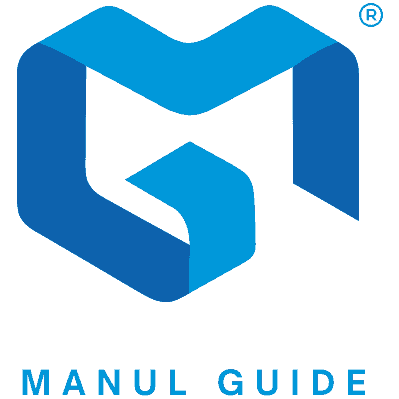SEO for Industrial Exporters: Essential Strategies for 2025
Key Takeaways
- Industrial SEO is focused on serving the manufacturing and industrial sectors. It marries technical and content strategies to increase search visibility for B2B transactions.
- Get deep with your keyword research to find hidden gems of niche markets within the industrial sector. Instead, aim to find long-tail keywords that appeal to narrowly defined customer needs.
- Implement on-page tactics like optimizing meta tags and headers, and enhance off-page SEO with quality backlinks and social media engagement.
- Prioritize fast loading times and mobile responsiveness, and develop a content marketing plan with a variety of formats to address industry challenges.
- Optimize for local search visibility and international markets by using local keywords and creating region-specific content.
- Continuously track key performance indicators and adjust strategies according to analytics to stay successful and competitive in the long term.
Understanding Industrial SEO
What is Industrial SEO?
Industrial SEO is a focused combination of technical and creative strategies specifically designed for the manufacturing and industrial industries. It also seeks to increase search visibility for industrial companies through focused efforts on niche markets. This strategy leverages the full power of keyword research, industrial-specific focused to really drill down.
Whereas typical SEO strategies may widen the focus, industrial SEO hones in on B2B connections. You also have to consider the complex B2B relationship factor. This is due in part to longer decision-making cycles and the technical complexity of industrial products.
For instance, a company manufacturing precision tools might use targeted keywords like “CNC machining services” to reach potential business clients. Manufacturing marketers willing to take the time to learn about SEO can earn long-term, organic rankings. Doing so lessens their need for paid marketing, while enjoying the trust and clicks that come with organic rankings.
Why Industrial SEO is Essential?
Considering the competitive nature of the industrial market, it is essential to maintain a high level of online visibility. Real, effective SEO is one of the most important things in the world for growing web traffic and generating new leads and opportunities.
As industrial exporters look to expand to new markets, SEO also helps create brand awareness and build relationships with potential customers. In fact, voice-activated searches are now over 50% of all searches. When you consider how much voice search increases your potential reach, optimizing for voice search is a no-brainer.
The site has to sell new buyers, soothe current clients, and talk to search engine bots in a way that says “trust me.” This multichannel strategy helps generate warmer leads, with organic leads out-performing their paid counterparts by a factor of three.
Key Differences in Industrial SEO
It just means it’s higher technical complexity and need to have a greater focus and understanding of a very niche audience. Additionally, long sales cycles in industrial sectors affect the SEO strategy. This requires in-depth, authoritative content that directly speaks to the specific needs and concerns of industrial buyers.
In order to win and hold page 1 rankings, manufacturers need to develop quality, relevant, original content. The average Google first-page result has around 1,447 words. As a general rule of thumb, shoot for over 1,500 words in your blogs, 600-700 on your home page, 400-500 for subpages.
When search engine algorithms change, those strategies need to be updated to continue earning valuable visibility. Considering that 70% of marketers consider SEO a long-term strategy, patience and adaptability are important.
Effective SEO Strategies for Exporters
1. Conduct Thorough Keyword Research
Keyword research isn’t a set it and forget it process. Finding high-value, niche-specific keywords to target is key. This smart, contextual, and never-ending process is music to the ears of the complex target audience in the industrial sector.
Tools such as Google Keyword Planner or SEMrush can help exporters to identify these keywords, with a specific emphasis placed on long-tail variations. These long-tail phrases are much more target customer focused, and usually have much higher conversion rates. Rather than just targeting the keyword ‘industrial machinery,’ target something like ‘affordable industrial machinery for small businesses.’
This strategy is effective for drawing your most relevant prospective audience. By regularly updating keyword lists, industrial exporters can ensure they stay relevant and visible.
2. Implement On-page Optimization Tactics
On-page optimization is key to ensuring that your website ranks high in search engine pages. This means carefully crafting your meta tags, headers, and alt text to improve searchability and user experience.
Equally important is that content is organized in a way that makes sense, while effectively using targeted key phrases in a natural way. This is where internal links come in, helping both users and search engines navigate your site while spreading page authority around your site efficiently.
These tactics also help you make sure users find exactly what they’re looking for, which builds a better user experience.
3. Leverage Off-page SEO Techniques
Creating quality backlinks is one of the best ways to increase your overall domain authority. Partnering with other authoritative industrial websites via guest blogging or joint ventures can help broaden reach and visibility.
Social media channels are also key for sharing content and attracting new visitors to the site. Consistent sharing of insights into your industry and trends, along with audience engagement on more professional platforms such as LinkedIn, can help cement that credibility.
4. Prioritize Technical SEO Elements
If you’re regularly conducting technical audits to locate and fix issues that are hindering your website performance. Things like fast loading times and mobile responsiveness are now crucial parts of any SEO strategy.
Using structured data markup also improves how search engines understand the website’s content. These technical features go a long way in creating a seamless browsing experience for users. A fast and seamless experience is key to retaining visitors and improving rankings.
5. Develop a Content Marketing Plan
Content is one of the most important factors in building trust and authority. A well-planned content calendar can help you develop robust, helpful content that speaks directly to the challenges being faced in the industry.
This piece of content should all be in different formats from blogs to video to infographic etc. To capture every audience member’s attention. By regularly sharing valuable insights, exporters can establish themselves as reliable authorities in their industry.
6. Establish a Local Online Presence
Even for industrial exporters, local SEO should be a key component in your strategy. Improving Google My Business listings improves your local search visibility and fostering reviews and testimonials will help you earn the trust of your community.
Incorporating local keywords in content and metadata attracts nearby prospects, which is vital for businesses looking to strengthen their foothold in specific regions.
7. Expand with International SEO
For exporters looking towards international markets, knowing these countries and adjusting SEO strategies accordingly is critical. Content also needs to be optimized for different languages and cultural contexts to truly reach a global audience.
By adding hreflang tags, you help search engines show users the right regional content to keep your business relevant—even across borders.
Benefits of Industrial SEO
Enhance Brand Visibility
Higher search rankings put industrial exporters in front of customers during the research process, increasing organic traffic through improved search visibility. Ultimately, this strategy brings more visitors to your website. It also lays the groundwork for the leads you want most—those who are actively searching for the solution you provide.
When you create this type of content, you establish your brand as an industry leader, earning trust and recognition in the industrial space. Good SEO tactics ensure that your brand gets noticed on search engine results pages (SERPs). This uniformity improves your chances of being found by customers.
Using social proof and case studies, for example, can further establish brand credibility, drawing in new customers and bolstering market presence. For instance, a dedicated product page titled “Steel I-beams” can showcase offerings comprehensively, helping to capture the attention of targeted searches.
Build Trust and Authority
Further, creating informative content that tackles industry trends and challenges not only supports your audience but solidifies your brand’s authority. Encouraging user-generated content and testimonials builds trust with potential clients, demonstrating real-world applications of your products.
Ongoing transparency in communication paired with highly relevant, useful content earns authority, which is tremendously important to earning your customers’ trust. If a site isn’t secure, browsers such as Chrome and Firefox will display warning alerts. These alerts scare away your potential visitors and highlight the importance of having a safe and reliable digital atmosphere.
Generate Qualified Leads
Deploying lead magnets, like whitepapers and webinars, draws in prospects seeking to gain a deeper understanding of the subject matter. By customizing your content to speak to the pain points of your industrial buyers, you’ll increase your lead quality.
Targeted landing pages take this a step further by efficiently converting visitors into leads. One of our B2B clients took the plunge and implemented a whole new digital marketing strategy. The result was a mind-blowing 195% lift in leads per quarter!
This emphasis on highly qualified leads means that every effort directly turns into valuable business opportunities.
Boost Revenue and ROI
Not only will optimizing the sales funnel provide a seamless transition from visitor to customer, but higher revenue will be the end result. By analyzing the return on investment (ROI) from SEO campaigns, you can justify marketing expenditures with a clear path to profitability.
According to a survey, business owners investing at least $500/month in SEO experience greater satisfaction, underscoring the importance of strategic spending.
Achieve Long-term Results
Long-term, sustainable SEO practices are focused on developing an enduring online presence and industry authority. By providing consistent fresh content, your site can stay relevant and improve its ranking over time.
Manufacturers need to be constantly analyzing and adjusting their SEO strategy, at least on a quarterly basis, to remain competitive. Nurturing long-term relationships with your customers fosters repeat business and referrals, feeding into an endless loop of expansion.
Organic search is still the number one channel to virtually any website, responsible for 45-65% of all web traffic, so it’s critical to long-term success.
Measuring SEO Success
Measuring SEO success properly is key for industrial exporters looking to get the most improvement from their SEO efforts. The first step in tracking success is determining what exactly ‘success’ looks like to you. This means having clear, measurable goals that tie back to business objectives.
Here’s a simple list of key performance indicators (KPIs) that can help in tracking SEO effectiveness:
- Organic traffic
- Conversion rates
- Bounce rate
- Average session duration
- Page views
Identify Key Performance Indicators
Determining key KPIs that match your company goals and marketing tactics is the foundation to measuring SEO success. Metrics such as bounce rate, average session duration, and page views can give you a clear picture of user engagement.
Most importantly, stay on top of these KPIs and be willing to adjust them as your business objectives and the competitive landscape change. If you want to increase online revenue, focus on conversion rate.
Measuring these conversion rates in conjunction with engagement metrics like time on site will provide a much clearer picture of how your SEO efforts are translating into actual sales.
Analyze Traffic and Lead Sources
Utilizing analytics tools like Google Search Console (GSC) is vital for monitoring website performance and user behavior, offering insights into how your site is performing in Google’s search results.
These tools will allow you to see at a much more granular level which channels are bringing the most traffic and leads to your website. Organic search traffic should make up 45-65% of total website traffic.
Measuring the success of all your marketing activities is essential for reaching the right qualified prospects. For instance, adjusting marketing strategies based on data insights can optimize lead generation, ensuring that your efforts are focused on channels yielding the highest returns.
Overcoming Common SEO Challenges
Address Technical SEO Issues
Tackling technical SEO challenges can feel like a daunting task, but it’s crucial for enhancing user experience and improving search rankings. Conducting regular technical audits is a proactive approach to pinpoint and address problems such as sluggish loading speeds and 404 errors. These audits are an important part of keeping your site functioning at peak performance.
A solid, logical website architecture is also critical for crawling and indexing, which is essential for search engines to understand, organize, and present your content. Implementing SSL certificates is a great way to increase the security of your site, and they can positively affect your rankings, too.
With every adaptation, your SEO strategy should be making its own parallel evolution. Observing no significant ranking improvement over a couple of months should prompt a discussion with your SEO company to pinpoint the cause.
Compete with Larger Companies
When competing against bigger competition, it helps to identify niche markets where your smaller industrial business has an opportunity to shine. Creating relevant, authentic USPs can go a long way in helping your brand stand out from bigger competitors.
Targeted content marketing is another effective tactic you can use to draw in niche audiences that your larger competitors may miss. One of the best methods around is writing comprehensive, informative articles that you can promote on niche industry blogs.
In addition, incorporating strategies such as Tinuiti’s A/B testing into your blog’s design can further improve user engagement. Keep in mind that your customers really want to feel assured before buying. When you deliver relevant content that speaks directly to their needs, you can foster trust and confidence in your brand.
Enhancing Website Performance
If you’re looking to increase website performance for industrial exporters, here are three proven tactics. A properly optimized, well-performing site will load quickly, respond beautifully, and deliver a frictionless experience to your users.
Here’s a bullet list of strategies to enhance website performance:
- Compress images without losing quality to speed up loading times.
- Use browser caching to reduce the load time for returning visitors.
- Optimize images and files to decrease load time.
Keeping track of your site’s speed is incredibly important. A slow-loading site hurts both your site experience and your bottom line. Consistently testing for responsiveness ensures that you’ll be able to provide a seamless experience.
Websites need to be mobile responsive, load in under 3 seconds and be error free with no 404s or broken links. This makes it easier for search engines to crawl your site and improves overall UX as well.
Optimize Website Structure
A clear, logical site hierarchy is essential. It helps users and search engines navigate the site quickly and easily. Descriptive URLs and breadcrumb navigation help both users and search engines understand your site structure.
By regularly updating the overall structure to account for new content and changes, the site is always able to be kept up to date. Internal links on your pages that connect users to other related content increase engagement and visibility.
Improve Readability and Scannability
Organizing content into scannable chunks with descriptive headings and bulleted lists makes it easier for readers to quickly find the information they need. Writing in plain language to avoid industry jargon widens the net.
Visuals such as photographs and infographics enhance the written word, creating content that breaks up dense information and helps audiences process complex ideas.
Ensure High Content Quality
Create content that your audience will find helpful and engaging, and that they will want to share. Regularly reviewing and updating content ensures information is always accurate and relevant.
Organic traffic, one of the most popular forms of lead generation—responsible for 69% of manufacturers’ leads—thrives on quality content. Inviting user feedback can help you identify your site’s biggest problem areas.
Advanced SEO Techniques
Advanced SEO techniques can greatly improve the online visibility of industrial exporters.
Here’s a bullet list of some proven techniques:
- Helps search engines understand your content better, leading to enhanced visibility with rich snippets.
- Prepares your content for the increasing number of voice-based queries.
Utilize Structured Data Markup
Use structured data to further aid search engines in understanding the context of what your site’s content is.
However, including schema markup will increase the attractiveness of your search listing which will increase your click-through rates.
By consistently validating structured data, you can be confident that your markup is up to date with search engine guidelines, keeping your site technically sound.
Optimize Video Content
Video content is an impactful way to engage site visitors and improve overall SEO performance.
Optimizing video titles, descriptions, and tags with relevant keywords can help improve their visibility in search results.
Video transcripts not only dramatically improve accessibility for all users, but they also give search engines more indexed content to chew on.
Implement a Keyword Map
Developing a keyword map is an important first step in making sure you assign targeted keywords to the right pages on your site.
Every page must target a different and specific group of keywords to avoid cannibalization.
Frequent revisions to the keyword map, based on performance data and shifting market trends, are key.
Monitoring and Adapting SEO Strategies
Monitoring SEO performance will help make sure that your SEO efforts are meeting the needs of your business goals and current market conditions. Here’s a simple bullet list to keep your strategies up-to-date:
- Using important metrics such as keyword ranking, organic traffic, and conversion rates.
- Create alerts in cases of major changes in search position or site traffic so that you can immediately react to the problem.
- Competitor tactics to find new opportunities in the market and threats.
- Inspect backlinks and check their relevancy and quality to make sure they’re boosting your domain authority.
Regularly Update Strategies
There are many reasons why monitoring and adapting your SEO strategy is essential to staying competitive. Quarterly reviews are a must for manufacturers. This will enable them to steer their tactics in the direction of new and improved search engine algorithms and user behavior.
This adaptive approach promotes an ongoing improvement mindset, creating a demand and desire marketing teams to lead. As it can take months or even years to achieve high local and international rankings, regular strategy reviews are vital.
Analyze User Journey with Analytics
Invaluable in providing insight to help you understand the user journey, from first contact to conversion. By identifying high drop-off points in the sales funnel, you can make targeted improvements where they matter the most.
By studying what users are doing, you can optimize content and improve your website as a whole. AI can help expedite these processes, but only a human can truly adapt content to resonate with what their audience deserves.
Conclusion
Industrial SEO is the foundation of developing your export business. Not only does it help you expand into new markets, but it also fortifies your overall SEO strategy. When you concentrate on the most effective strategies, you can increase your online visibility and reach the audience that matters most. Every move, from selecting the right keywords to optimizing your website’s loading speed, helps lay a strong SEO groundwork. Never stop monitoring your efforts and adjusting tactics to ensure you remain competitive. Once again, your commitment to setting a strong SEO foundation will be rewarded with more quality leads and ultimately more sales. Take a deep plunge into these strategies and watch the improvement unfold. Want to take your export game to the next level? Get started on your SEO now and see your business flourish.
Frequently Asked Questions
What is industrial SEO?
Industrial SEO is specifically focused on optimizing websites for industries such as manufacturing and industrial export. It boosts search engine visibility, driving highly relevant traffic and expanding reach on a global scale. Industry-specific keyword research and technical SEO expertise are paramount.
Why is SEO important for exporters?
SEO increases your visibility in industrial international markets. It brings in qualified leads, builds brand awareness, and improves your overall competitive edge. When industrial exporters implement effective SEO strategies, they see increased conversions and business growth.
What are key SEO strategies for exporters?
Make sure to put special attention towards keyword research, local SEO, and content optimization. Create multilingual content and ensure everything is mobile friendly. Optimize your website for speed, and focus on acquiring international backlinks to improve your international ranking potential.
How can exporters measure SEO success?
Monitor key metrics such as organic traffic, keyword rankings, and conversion rates. Implement tools including Google Analytics to track their performance. Continuously test and refine tactics for ongoing improvement.
What are common SEO challenges for exporters?
Other challenges are language, regulations that vary widely by country, and cultural differences. Exporters need to craft different strategies for each target market, which means extensive research and localization expertise.
How does industrial SEO benefit website performance?
SEO improves your overall site speed, user experience, and mobile-friendliness–all important factors for success. In turn, that helps with user experience, such as navigation and bounce rate, which helps with overall engagement and conversions. Ultimately, well-optimized sites outperform their competition in search results.
What advanced SEO techniques can exporters use?
Leverage structured data, voice search optimization, and AI-driven tools. Dive into the more technical aspects of SEO, such as schema markup and AMP. Keep track of algorithm changes to ensure long-term success.







